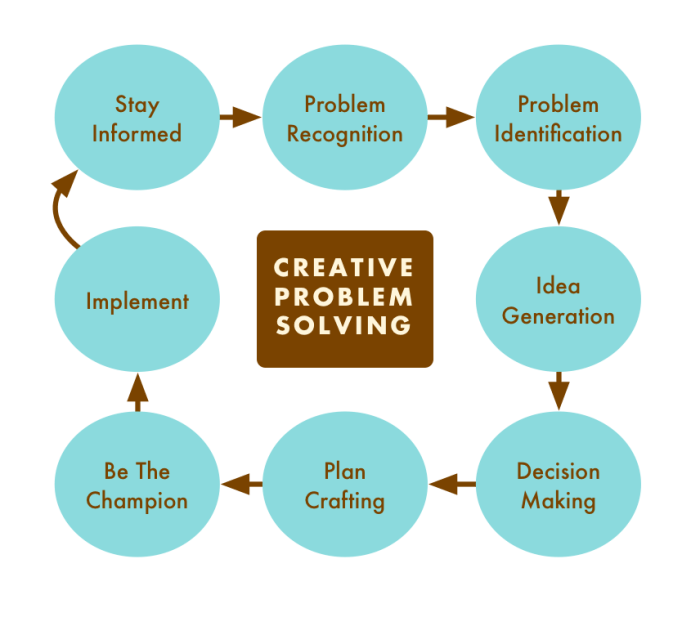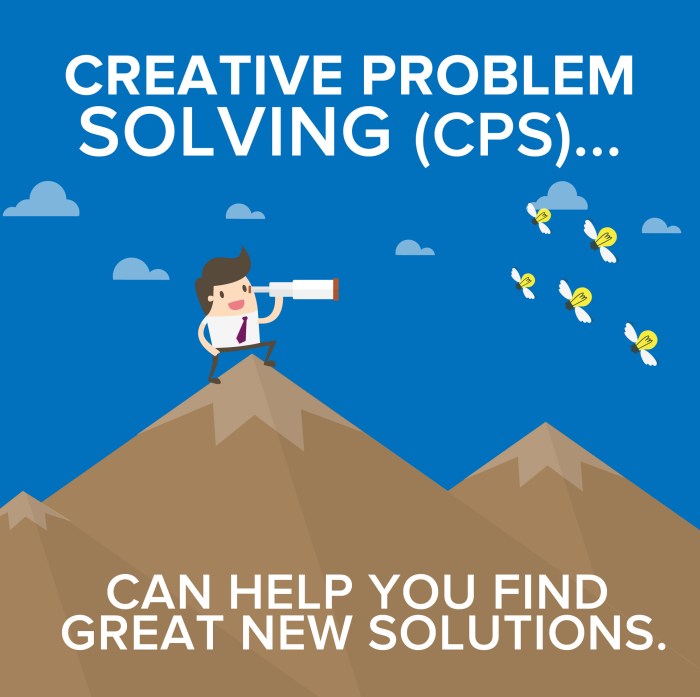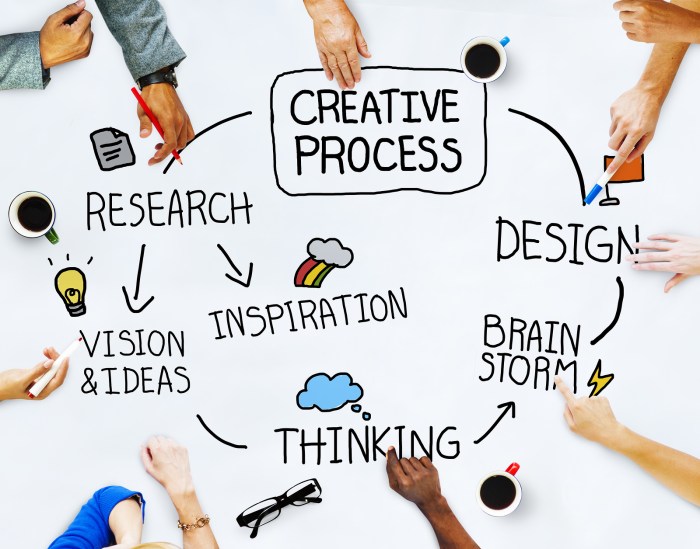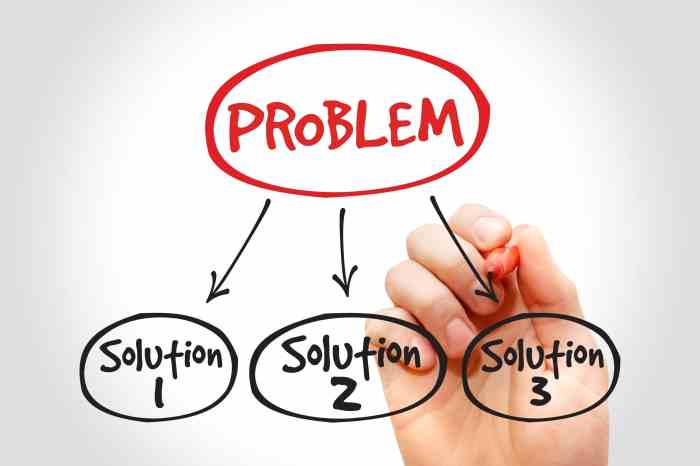Unlocking innovation requires a structured approach. This guide delves into a seven-tip framework for creative problem-solving, transforming challenges into opportunities. We’ll explore the design thinking process, from initial problem definition and user research to idea generation, prototyping, and iterative refinement. Learn how to effectively harness user feedback to shape innovative designs and ultimately, achieve successful product launches.
Through practical examples and clear explanations, we’ll equip you with the tools and strategies needed to navigate the complexities of innovative design. Whether you’re a seasoned designer or just starting out, this guide offers valuable insights and actionable steps to foster creativity and drive impactful results. We’ll cover various brainstorming techniques, prototyping methods, and user feedback analysis, providing a comprehensive roadmap for innovation.
Understanding the Innovation Design Process

Designing for innovation isn’t a haphazard process; it’s a structured approach that leverages creativity and methodical thinking. A well-defined process significantly increases the likelihood of developing successful and impactful solutions. Understanding the stages involved is crucial for navigating the complexities of creative problem-solving.
The design thinking process, a widely adopted framework, provides a robust methodology for innovative design. It’s an iterative process, meaning that you might revisit earlier stages as you gain new insights. This flexibility allows for adaptation and refinement throughout the design journey.
Stages of the Design Thinking Process
The design thinking process typically involves five key stages: Empathize, Define, Ideate, Prototype, and Test. Each stage builds upon the previous one, creating a continuous feedback loop that leads to a refined solution. The Empathize stage focuses on understanding the user’s needs and perspectives. The Define stage clarifies the problem statement based on the gathered insights. The Ideate stage involves brainstorming and generating a wide range of potential solutions. The Prototype stage focuses on creating tangible representations of the ideas, and the Test stage involves evaluating these prototypes through user feedback. This iterative cycle allows for continuous improvement and refinement of the solution.
Defining a Problem Effectively
Clearly defining the problem is paramount before embarking on the design process. A poorly defined problem leads to misguided solutions. This involves a structured approach to ensure that the problem is thoroughly understood and framed appropriately for creative problem-solving. This ensures that the subsequent stages are focused and efficient.
A step-by-step guide for effective problem definition includes: 1. Gather Information: Conduct thorough research to understand the context surrounding the problem. 2. Identify the Core Issue: Dissect the problem to pinpoint its root cause, moving beyond superficial symptoms. 3. Frame the Problem: Articulate the problem concisely and clearly, focusing on the user’s needs and the desired outcome. 4. Set Measurable Goals: Define specific, measurable, achievable, relevant, and time-bound (SMART) goals for the solution. 5. Document Findings: Create a comprehensive document outlining the problem statement, its context, and the established goals. This documentation serves as a reference point throughout the design process.
The Importance of User Research
User research plays a vital role in shaping innovative designs. By understanding user needs, behaviors, and pain points, designers can create solutions that are truly relevant and effective. Without a deep understanding of the target audience, the risk of developing solutions that fail to meet user expectations is significantly increased. This iterative process ensures that the final product resonates with its intended users.
User Research Methods
Understanding the various user research methods and their applications is crucial for effective design. Different methods provide different types of insights, and selecting the appropriate method depends on the specific research question and context.
| Method | Description | Application | Example |
|---|---|---|---|
| User Interviews | Direct conversations with users to gather in-depth information about their experiences and perspectives. | Understanding user needs, pain points, and motivations. | Interviewing potential customers to understand their needs and challenges when using a specific product. |
| Surveys | Structured questionnaires distributed to a larger group of users to gather quantitative and qualitative data. | Gathering broad insights, identifying trends, and measuring user satisfaction. | Distributing a survey to assess user satisfaction with a website’s design and functionality. |
| Usability Testing | Observing users as they interact with a prototype or product to identify usability issues. | Identifying areas for improvement in the user interface and user experience. | Observing users as they navigate a new mobile app to identify any difficulties or pain points. |
| Contextual Inquiry | Observing users in their natural environment to understand their work practices and needs. | Understanding the context of use and identifying opportunities for improvement. | Observing a doctor in their office to understand their workflow and identify areas where a new medical device could improve efficiency. |
Generating and Refining Creative Ideas

Generating and refining creative ideas is a crucial step in the innovation design process. It involves moving beyond the initial problem definition to explore a wide range of potential solutions, then systematically evaluating and improving upon them. This stage requires a blend of divergent thinking (generating many ideas) and convergent thinking (selecting and refining the best ones).
Brainstorming techniques are essential tools for generating a diverse pool of potential solutions. Effectively employing these techniques can significantly broaden the scope of potential innovations and increase the likelihood of discovering truly groundbreaking ideas.
Brainstorming Techniques
Several brainstorming techniques can help generate a wide range of potential solutions. These techniques encourage participation, build upon existing ideas, and help overcome initial limitations in thinking. The selection of the most appropriate technique often depends on the context of the problem and the characteristics of the team.
- Brainwriting: Participants silently write down their ideas individually before sharing them. This minimizes the influence of dominant personalities and encourages quieter members to contribute.
- SCAMPER: This checklist prompts idea generation by systematically considering substitutions, combinations, adaptations, modifications, put to other uses, eliminations, and reversals related to the existing product or process.
- Mind Mapping: This visual technique starts with a central idea and branches out to related concepts, creating a visual representation of the idea’s various aspects and potential connections.
- Reverse Brainstorming: Instead of focusing on solutions, the team identifies potential problems or obstacles. This can reveal unexpected opportunities and lead to innovative solutions by addressing potential weaknesses proactively.
Idea Selection and Refinement Flowchart
The process of selecting and refining ideas can be visualized using a flowchart. This systematic approach ensures that the best ideas are identified and developed, while less promising ones are eliminated efficiently. The flowchart below depicts a typical process.
Imagine a flowchart with these stages:
1. Idea Generation: The starting point, where all brainstormed ideas are collected.
2. Idea Filtering (Initial Screening): Ideas are assessed based on feasibility, desirability, and viability. Unrealistic or impractical ideas are eliminated.
3. Idea Clustering: Similar ideas are grouped together to identify common themes and potential synergies.
4. Idea Prioritization: The remaining ideas are ranked based on their potential impact and likelihood of success. This often involves scoring criteria and weighted averages.
5. Idea Development: The top-ranked ideas undergo further refinement and development, including detailed design specifications and prototyping.
6. Idea Testing and Iteration: Prototypes are tested, feedback is gathered, and the design is iterated upon based on the results.
Prototyping Methods
Prototyping is a crucial step in testing and refining innovative designs. Different prototyping methods offer varying levels of fidelity and are suitable for different stages of the design process.
- Low-Fidelity Prototyping: These prototypes are quick and inexpensive to create, often using simple materials like paper, cardboard, or sketches. They are useful for early-stage testing and gathering initial feedback on the core concept. Examples include paper prototypes and storyboards.
- Medium-Fidelity Prototyping: These prototypes offer a more realistic representation of the final product, using tools like wireframes, interactive mockups, or 3D-printed models. They allow for more detailed testing and feedback on functionality and user experience.
- High-Fidelity Prototyping: These prototypes closely resemble the final product, often incorporating most of the intended features and functionalities. They are used for extensive testing and refinement before final production. Examples include fully functional software prototypes or working physical models.
Implementing and Iterating on Designs

Bringing your innovative designs to life requires a robust testing and iteration process. Successfully navigating this phase hinges on effectively gathering user feedback, analyzing it critically, and using those insights to refine your product. This iterative approach is crucial for ensuring your final product truly meets user needs and achieves its intended purpose.
Effective implementation involves more than just building a prototype; it’s about understanding how users interact with it and adapting based on their experiences. This section will explore strategies for testing prototypes, analyzing user feedback, and showcasing a successful product launch driven by iterative design improvements.
Prototype Testing and Evaluation Strategies
Testing prototypes with your target users is paramount. This involves creating a representative sample of your target audience and observing their interactions with your prototype. Different testing methods offer varied insights. For example, usability testing focuses on observing how easily users can complete tasks using the prototype, while A/B testing allows for comparing different design iterations to see which performs better. Qualitative feedback, gathered through interviews or focus groups, can provide valuable insights into user preferences and pain points. Quantitative data, such as task completion rates and error rates, offers objective measures of usability. By combining these approaches, you gain a comprehensive understanding of your design’s strengths and weaknesses.
Analyzing User Feedback and Design Iterations
Analyzing user feedback is not simply about counting positive and negative comments. It’s about identifying patterns and themes in the feedback to understand the underlying issues. For example, consistent negative feedback about a particular feature indicates a need for redesign or removal. Conversely, positive feedback on a specific element might suggest expanding upon its functionality. A useful technique is to create an affinity diagram, visually grouping similar feedback items to identify key areas for improvement. This structured approach helps prioritize changes based on their impact and feasibility. Once prioritized, these changes are incorporated into the design, leading to a revised prototype, which then undergoes further testing. This iterative cycle continues until a satisfactory level of user satisfaction and product performance is achieved.
Case Study: Iterative Design of a Fitness Tracking App
The “FitFlow” fitness tracking app initially launched with a minimalist design, featuring a simple interface with basic tracking capabilities. The visual elements were primarily muted greens and blues, with clear, sans-serif fonts for easy readability. Data was presented in clean graphs and charts, prioritizing ease of understanding over visual complexity. However, user testing revealed several areas for improvement. Users found the social features lacking and requested more personalized workout plans. The first iteration introduced a social feed allowing users to connect and share their progress, visually represented by a dynamic, scrolling feed with profile pictures and activity updates. The second iteration incorporated AI-powered personalized workout plans, visually represented by a customizable calendar with daily workout suggestions tailored to user goals and fitness levels. These suggestions were displayed with vibrant icons and clear descriptions. The final design incorporated user feedback by adding vibrant color accents, improved social features, and personalized workout plans, resulting in a more engaging and effective user experience. The app’s overall visual appeal shifted from minimalist to more dynamic and motivating, directly reflecting the iterative design process and user feedback integration.
Final Conclusion

Mastering the art of innovative design hinges on a systematic approach that blends creativity with rigorous testing and refinement. By understanding the design thinking process, effectively utilizing user research, and iteratively improving prototypes based on feedback, you can significantly enhance your chances of developing successful and impactful solutions. This guide has provided a foundation for this journey; now it’s time to apply these principles and embark on your own innovative endeavors.